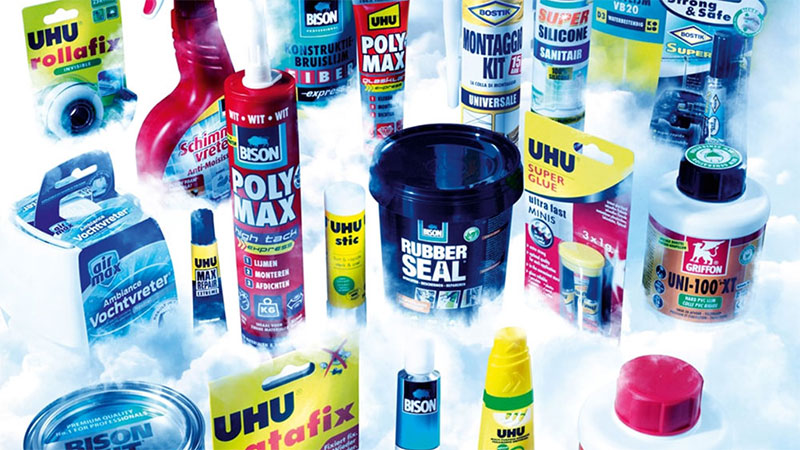People prefer order over chaos. Classifying things helps us get a grip on the surrounding world. It’s been like that since ancient times when Aristotle classified every living creature known to man.
As a packaged goods manufacturer, you need to classify all your products. The more products there are in your portfolio, the more complex it gets. To make things even worse, each department has a different need when it comes to classification:
- Finance needs to classify products in groups and categories, in order to determine the financial performance of each group or category (revenue per product class, product group and category)
- Management uses product classification to draw the organisation chart (e.g. a product manager of a beer brand reports to the Head of Beverages)
- Sales and marketing classifies products into a commercial hierarchy. This type of classification is an odd one out, as the categories are not mutually exclusive. If you are a manufacturer of glue, you might want to assign multiple categories to a single type of glue – it might be a hobby glue in a supermarket and a DIY glue in a construction market
- Supply needs to work with different types of external product classifications such as ETIM, GPC, UNSPC and eCl@s (there are many more). In a multi-channel environment you will need to list all of your products in several different types of classification.

So classification means different things in different departments. That is why many manufacturers feel the urge to choose one classification that will rule them all. Since external product classifications are more or less obligatory, there is a tendency to use ETIM, GPC, UNSPC or eCl@s internally as well. Although it might seem to make your life easier at first, I would strongly advise against this. External classifications are an entirely different ballgame than internal commercial hierarchies. Failing to distinguish between them may cause serious problems.
Why classify in the first place?
Let’s start with a simple definition:
Classification is the division of items and products into logical categories. These categories generally encompass a trait that the item or product share.
For instance, a child might put all the pencils into one pouch and all the cars into a separate pouch. The child has now classified which are pencils and which are cars.
As mentioned earlier, one of the first elaborate known classifications in history is the taxonomy by the Greek philosopher Aristotle. He first divided all known organisms into two groups: plants and animals. Then he divided those into subgroups, like ground animals, water animals and air animals. Although the idea in itself was quite clever, the classification did not turn out to be very good (frogs, for example, live both in water and on land). The classification of nature that is used today was created by Carolus Linnaeus in the 18th century. The Swedish biologist divided all living things into five levels: class, order, genus, species and variety.

We, as humans (or Homo Sapiens) can be classified as follows:
Class: mammals
Order: primates
Genus: homo
Species: sapiens
In our economy, many product classifications use the same logic; they start with broad categories and get more specific along the way. In GS1 wine would be classified as “food/beverage/tobacco” first, then as “beverage”, then as “alcoholic beverage” and finally as “wine – still”.
The essence of classification is that it tries to narrow the world into a decision tree. If everyone (manufacturers, distributors, retailers, e.a) use the same classification, we create order within the chaos, allowing us to compare and categorise products.
Why differentiate between internal and external classifications?
As mentioned earlier, some manufacturers use external classifications such as ETIM or GPC internally as well. The reason why this is not such a great idea is called ‘mutually exclusiveness’. Classifications used by datapools are always exclusive; a product either belongs to category A, B or C. As mentioned earlier, categories in commercial hierarchies (like the glue in the example) are often not mutually exclusive.
After all, different people in different markets find and use your products in different ways. A shoe manufacturer might sell pumps to a consumer who is looking for dancing shoe, or for party shoes, or just for pumps. In other words: in your commercial hierarchy, a product may be listed in several categories at the same time.

Most PIM solutions only offer one way to classify, which is the same internally and externally. This prohibits you as a manufacturer from being flexible in the way you classify. Everyone who operates across multiple markets knows that from time to time you need to be able to differentiate between the way you categorise a product in one market or the other.
Internal classifications are completely different from the commercial hierarchies that are used externally. Mixing the two is simply a bad idea. It would be like a pet shop owner using Linnaeus’ taxonomy to categorise animals in the store when he only sells birds, fish and rodents. Just because a classification has a certain value in the outside world, that doesn’t mean it has the same value internally.
How SyncForce helps
In SyncForce, we distinguish between classifiations that are used internally and commercial hierarchies that are used for commercialization in different markets and channels. As a result you can have unlimited number of commercial hierarchies.
While the SyncForce Syndication Engine products automaticly maps your internal classification to multiple external classifications such as ETIM or GPC.
It’s like two versions of reality that are needed in order to function as a manufacturer; in the outside world, you need to comply with industry standards (ETIM, GPC) but you also need adapt to local market conditions in your different touchpoints (websites, print catalogs, price lists, webshops, apps). While at the same time you make sure you have internal view on assortiment and product groups, so reporting and other insights are all based on the same categorisation.
